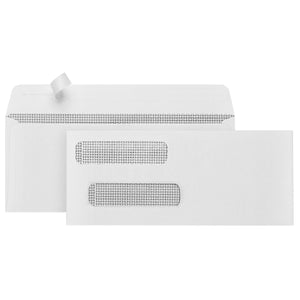Both the Family and Medical Leave Act (FMLA) and short-term disability insurance are designed to offer workers a safety net if they should fall ill or become injured and cannot perform the duties of their job. While they both provide protection to employees who qualify, the process, length of leave available, and eligibility are quite different. Continue reading to learn the differences between FMLA vs. short-term disability, including who is eligible, the pros and cons of each type, and frequently asked questions.
FMLA vs. Short-Term Disability
There are a few key differences when it comes to FMLA versus short-term disability. Let’s begin with FMLA.

The Family and Medical Leave Act (FMLA)
The Family and Medical Leave Act (FMLA) entitles eligible employees of covered employers to take 12 weeks of unpaid, job-protected leave each year for specified family and medical reasons with continuation of health benefits. It’s a government provision that’s required of all public agencies (including local, state, and federal employers), schools, and private sector employers who employ 50 or more employees for at least 20 workweeks in the current or preceding calendar year. This includes joint employers and successors of covered employers.
For an employee to be eligible for FMLA, they must:
- Work for a covered employer.
- Have worked for the employer for 12 months (the 12 months do not have to be consecutive).
- Have worked 1250 hours during the 12 months prior to the start of leave.
- Work at a location where the employer staffs 50 or more employees within a 75-mile radius.

Under FMLA, eligible employees are entitled to:
- Twelve workweeks of leave in a 12-month period for:
- The birth of a child, and to bond with and care for the newborn child within one year of birth.
- The placement with the employee of a child for adoption or foster care, and to care for and bond with the newly placed child within one year of placement.
- Caring for the employee’s immediate family member (spouse, child, or parent) who has a serious health condition.
- A serious health condition that makes the employee unable to perform the essential functions of their job.
- Any qualifying exigency arising out of the fact that the employee’s spouse, child, or parent is a covered military member on “covered active duty,” OR
- Twenty-six workweeks of leave during a single 12-month period to care for a covered servicemember with a serious injury or illness if the eligible employee is the service member’s spouse, child, parent, or next of kin (military caregiver leave).

Short-term Disability Insurance (STD)
Short-term disability insurance replaces a percentage of an employee’s income if they experience a temporary injury or illness that renders them unable to perform the essential functions of their job, such as a construction worker breaking an arm or an office worker developing carpal tunnel from excessive typing. You can either acquire short-term disability insurance through your employer or individually from a private insurance company.

Depending on the policy you choose, you will be reimbursed for 40-70% of the wages you lose, and most policies have a benefit cap. Short-term disability benefits typically last for 3 to 12 months, but some plans may pay as long as two years.

Bottom Line
So, to put STD vs. FMLA in a nutshell, FMLA protects your job for 12 weeks while you’re on medical leave, but it doesn’t provide pay. Short-term disability provides you with pay while you’re on medical leave for three months up to as much as two years, but it doesn’t protect your job. If you can afford it, personal short-term disability insurance can replace a portion of your income while you’re on FMLA, but most insurance advisors do not recommend buying short-term disability insurance.
The Pros and Cons of FMLA vs. STD
The benefits and drawbacks of each type of protection are different and choosing what’s right for you depends on your circumstances and what you qualify for. Carefully research your own company policy and the qualifications for each type of protection. Below we’ve outlined some of the key pros and cons to the Family and Medical Leave Act and short-term disability.
| Pros | Cons | |
| Family and Medical Leave Act (FMLA) |
● Allows you to balance your work and family life. ● Enables men to take paternity leave. ● Protects your job while on leave. By law, you cannot be fired for requesting or taking FMLA leave. After the 12 weeks are up, the company must restore your job or place you in an equivalent position (one with similar pay and job responsibilities.) |
● Doesn’t guarantee income. ● Doesn’t protect your exact job—the company could place you in an equivalent role. ● You must provide a 30-day advance notice before taking FMLA. ● Not everyone qualifies for FMLA. (If you haven't worked for your employer for at least 12 months and for at least 1250 hours over the past 12 months, you cannot qualify for FMLA. You also cannot qualify for FMLA if you work at a facility where the company employs fewer than 50 employees within a 75-mile radius.) ● Your employer may get to decide whether or not your family member’s illness qualifies. |
| Short-Term Disability (STD) |
● Provides monthly income if you become ill or get injured. ● Provides peace of mind by ensuring you have income coming in (which is especially helpful if you don’t have much put away in savings.) |
● You will face a waiting period, also known as an elimination period, which can last up to a month. ● The majority of plans include limitations and exclusions. (For example, most policies won’t cover self-inflicted injuries, require a waiting period for pre-existing conditions, and may limit your labor and delivery benefits unless you suffer complications or undergo a C-section. ● Short-term disability insurance companies often do not allow people with pre-existing conditions to obtain coverage. These conditions include pregnancy, cancer, HIV/AIDS, diabetes, heart disease, neurological disorders, etc. ● Short-term disability benefits do not cover the time you take off from work to care for a sick family member or to adopt a child. ● Many employers require you to use all of your paid sick leave or paid time off before you can qualify for short-term disability. |
Other Questions About FMLA

Is My Company too Small for FMLA?
Your employer may be too small for the Family and Medical Leave Act. If the company you work for or operate employs fewer than 50 people within a 75-mile radius, then your company is too small to qualify for FMLA.
Does Depression Qualify for FMLA?
Provided you meet the other requirements (i.e., you’ve worked for the employer for 12 months, for 1250 hours over the course of the past 12 months, and your employer employs more than 50 people in a 75-mile radius), yes—depression qualifies for FMLA. However, your employer will likely ask for documentation of your mental illness. This documentation must come from a qualified professional, usually a doctor or therapist.


Does Anxiety Qualify for FMLA?
An anxiety attack or post-traumatic stress disorder (PTSD) episode may qualify for FMLA, but it will need to be documented and confirmed by a qualified professional, usually a doctor or therapist. You will also need to meet the other requirements of FMLA.
If your doctor says that a shortened workweek or other accommodation is essential to your mental health, it’s also possible to take intermittent FMLA for mental health disorders. FMLA enables eligible employees to take off up to 60 days per year, and the days do not have to be taken consecutively.
📚 Employee burnout is a serious health concern. Learn more about Preventing Burnout in the Workplace: Actionable Strategies for Employees and Employers.

Do Part-Time Employees Qualify for FMLA?
To be eligible for FMLA, an employee needs to have worked for the company for 1250 hours within the last 12 months. Due to the 1250 hour requirement, most part-time employees will not qualify for FMLA. That said, state FMLA laws may have lower requirements.
More from Blue Summit Supplies
💡 Transparent communication inside and outside of the workplace helps businesses set their own narrative, build trust, and foster meaningful relationships. Learn how to foster Transparent Communication in the Workplace.
💡 Discrimination at work of any type should not be tolerated. Learn how to spot discrimination in the workplace and what to do about it if it happens to you.
We’re passionate about helping workplaces improve trust, collaboration, and wellness. Follow our office supplies blog for the latest industry trends, business strategies, leadership advice, and more.
If you have any questions or want to talk to someone about office supplies, send us an email or connect with us on Twitter, Facebook, or Instagram.
 For more informative articles about office supplies, subscribe to our email newsletter!
For more informative articles about office supplies, subscribe to our email newsletter!
Never fear, you won't begin receiving daily sales emails that belong in a spam folder. Instead, we promise a fun weekly roundup of our latest blog posts and great finds from across the web. And if you lose interest, it's always easy to unsubscribe with a single click.










